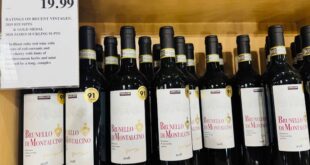[ad_1]
A savory, refined version, with rose petal and bitter cherry atop a deep well of mineral energy. Chalky and creamy in feel, with chives and smoky flint adding savory detail and cut to the medium-weight palate. Drink now. 8,000 cases made, 2,500 cases imported.
[ad_2]
Source : 35a8f78951c405c04452992eff9511ba
